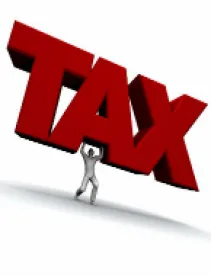In November 2020, California voters will decide whether to fundamentally change how real property is taxed in the state. Proposition 15, if approved, would establish a “split roll” property tax regime, whereby commercial and industrial properties would be taxed differently than residential properties.
The Current Property Tax System
By way of background, since its passage in 1978, Proposition 13 has required all real property in California on the local assessment roll, including residential, commercial, and industrial properties, to be assessed at a maximum rate of 1% of the property’s market value as of the date of the most recent change in ownership (usually, the most recent purchase date) or new construction, with an annual adjustment equal to the rate of inflation or 2%, whichever is lower. Put differently, under Proposition 13, property taxes are pegged to the property’s original purchase price, plus the cost of later improvements, and not the property’s current market value. When a property is sold, it is reassessed at its new market value (usually the purchase price). It is then taxed at a rate of 1% of that new value, and from then on, Proposition 13’s tax limits apply until it is sold again. This is the current tax regime and applies to all California real property on the local assessment roll.
Changes to Property Taxation Under Proposition 15
Proposition 15, if approved by voters, would amend the California Constitution to require commercial and industrial properties, except those zoned as commercial agriculture, to be taxed based on their current market value, rather than purchase price subject only to annual increases not exceeding 2%.
The key provisions of Proposition 15 include the following:
-
Requires Frequent Reassessment of Commercial and Industrial Properties. The new taxing regime would be effective beginning with the 2022-2023 fiscal year, and require affected commercial and industrial real property to be reassessed based on market value at least once every three years. The Legislature would be required to establish a task force to establish a phased-in approach for the new taxing regime by which a certain percentage of commercial and industrial real property within each county would be reassessed each year over a three-year period beginning with the 2022-2023 fiscal year. For properties reassessed in the first year of the three-year phase-in period, the lien date for that fiscal year would be Jan. 1, 2022, and the first installment of property taxes under the reassessed value would be due Nov. 1, 2022. After the initial reassessment, commercial and industrial real property would be periodically reassessed at market value at least every three years.
-
Deferred Operative Date for Some Properties. Commercial and industrial real property with at least 50% of the occupied square footage occupied by “small businesses,” as defined in the initiative, would not be reassessed until the lien date for the 2025-26 fiscal year.
-
Mixed-Used Property Provisions. For mixed-use property used both for residential and commercial purposes, the Legislature would be required to provide that only the portion of the property used for commercial or industrial purposes would be assessed based on market value. The Legislature would also be allowed to provide an exclusion from reassessment for the commercial portion of the property if 75% or more of the property by square footage or value is used for residential purposes.
-
Limited Exemptions. The initiative includes limited exemptions from the reassessment requirement:
-
Residential Property. Residential property would be exempt from annual reassessment to full market value, and would continue being assessed under the current system. The language defines residential property as “property used as residential property, including both single-family and multi-unit structures, and the land on which those structures are constructed or placed.”
-
Commercial Agricultural Property. “Land that is used for producing commercial agricultural commodities” would be exempt from annual reassessment to full market value.
-
Small Business Property. Owners of commercial and industrial property who own California properties with an aggregate full-market value of less than $3 million would be exempt from annual reassessment to full market value.
-
Business Personal Property. Small business taxpayers would be given a complete exemption from the property tax on business tangible personal property (computers, desks, copiers, etc., that is subject to annual property tax when owned by a business in California). For all other taxpayers, an exemption up to $500,000 would be granted for business tangible personal property.
-
-
Changes to the Appeals Process. The Legislature would also be required to develop a process for hearing appeals resulting from the reassessment of properties subject to the new taxing regime. This new appeals process would include drastic changes to the current appeals process, including placing the burden of proof on the taxpayer to prove that the property was not properly valued by the assessor, and repealing the rule that the owner’s estimate of value is deemed to be correct if the appeal is not decided within two years of being filed.
Legal Challenges to Proposition 15’s Ballot Language
Until recently, there were pending legal challenges to Proposition 15’s title and how the measure is summarized. One challenge sought edits to the ballot title and summary written by Attorney General Xavier Becerra, based on allegations that Proposition 15 contains false claims, emphasizes elements that encourage a “yes” vote, and downplays the fact that Proposition 15 is a major tax increase. While the trial court judge acknowledged that the attorney general’s description is “somewhat misleading,” it did not take corrective action.
The trial court judge also rejected a request to delete a “Yes on 15” argument that the initiative “does not impact homeowners and renters” and further ordered language about the potential impact on home-based businesses to be deleted. The judge also ordered the deletion of language that said there is “no accountability how the money is spent,” but allowed a headline saying the measure “lacks accountability.” The judge ordered just one change to the Yes on 15 arguments, removing the word “all” from the claim that “all businesses valued at less than $3 million are exempt.”
The Court of Appeal issued one-sentence denials of the petitions to review the lower court decisions.
Fiscal Impact
The Legislative Analyst’s Office has estimated that, upon full implementation, Proposition 15 would generate between $8 billion and $12.5 billion in revenue per year.
The revenue from the revised tax on commercial and industrial properties would first be distributed to (a) the state to supplement decreases in revenue from the state’s personal income tax and corporation tax due to increased tax deductions and (b) counties to cover the costs of implementing the measure. Then, 60% of the remaining funds would be distributed to local governments and special districts, and 40% would be distributed to school districts and community colleges.






 />i
/>i
